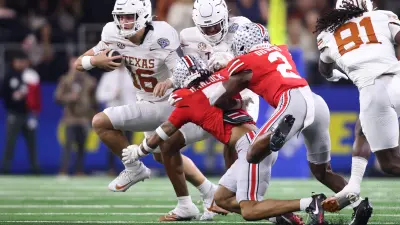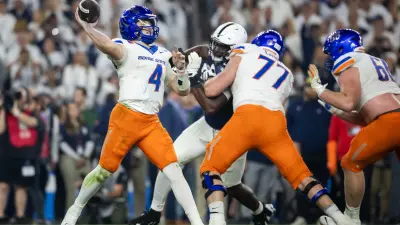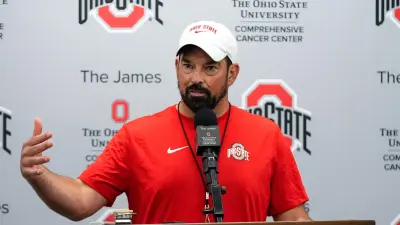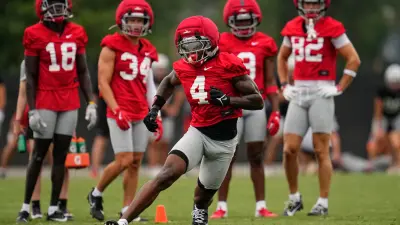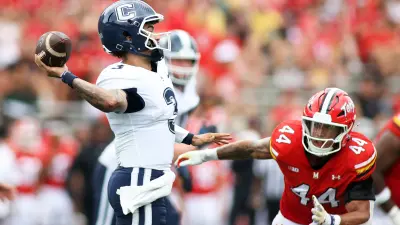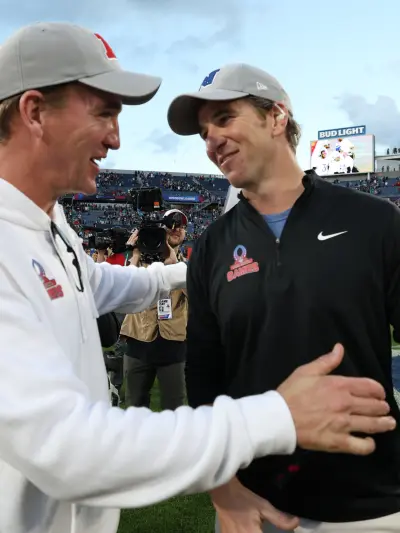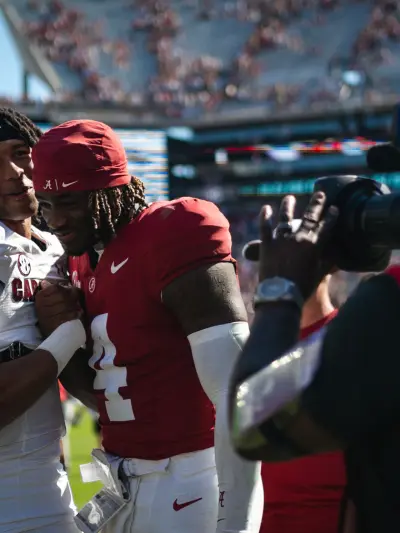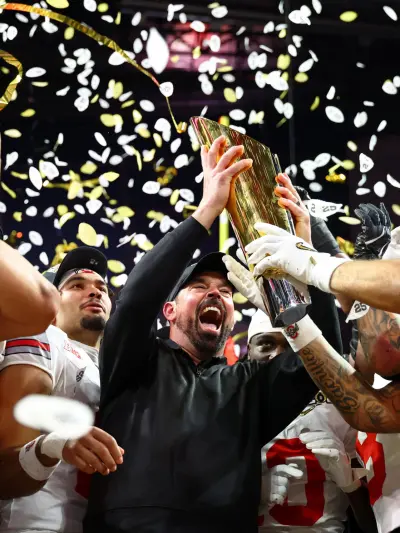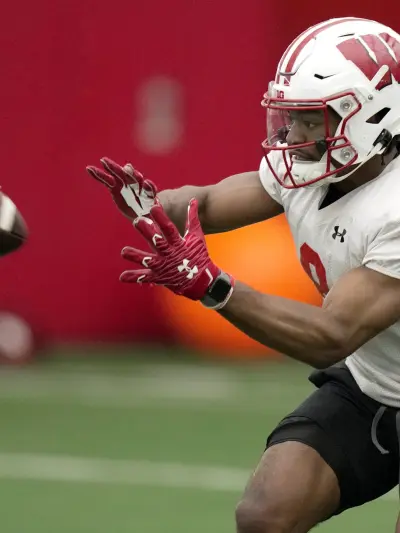By Dorrington Myers
Here’s a refreshing outlook on a few quarterbacks during their recruiting process, ultimately committing to their respective teams. This analysis provides a comprehensive breakdown of each offense and my thoughts on how each quarterback will fit in, beyond just guessing their performance.
Bryce Underwood
Belleville, MI (Belleville)
Ranking- #1 MI, #1 QB, #1 National
Committed to: LSU
Joe Sloan is known for his innovative and dynamic offensive schemes in football. His approach typically emphasizes the following key elements:
Spread Offense: Sloan often utilizes a spread offense, which aims to spread the defense out across the field, creating more one-on-one matchups and opportunities for big plays. This formation uses multiple wide receivers and often employs a no-huddle approach to keep the defense off balance.
Fast Tempo: One hallmark of Sloan’s offensive strategy is a high-tempo, fast-paced game. This keeps the defense from substituting and adjusting, allowing the offense to exploit mismatches and maintain a rhythm.
Versatility and Balance: Sloan’s schemes are known for their versatility and balance between the run and pass game. He often uses a variety of formations and personnel groupings to keep the defense guessing and to adapt to different game situations.
Quarterback-Centric: The offense typically revolves around the quarterback, who is expected to make quick reads and decisions. This often includes a mix of short, quick passes and deep shots down the field, leveraging the quarterback’s arm strength and decision-making abilities.
More Sports News
Creative Play-calling: Sloan is known for his creative play-calling, often incorporating misdirection, play-action passes, and unique formations to confuse the defense and create big-play opportunities.
Emphasis on Fundamentals: Despite the complexity and creativity of his schemes, Sloan emphasizes the importance of fundamentals such as precise route running, solid blocking techniques, and proper execution of plays.
Underwood is capable of doing very well in this system. He can throw accurately, run very well, and operate within a tempo system with the best of them. During his sophomore and junior seasons, he amassed 3,405 yards along with 42 touchdowns against 3 interceptions. His completion percentage was 67%. This tells me that Underwood knows how to take care of the ball. LSU would thrive having a quarterback who is dynamic and a good decision-maker.
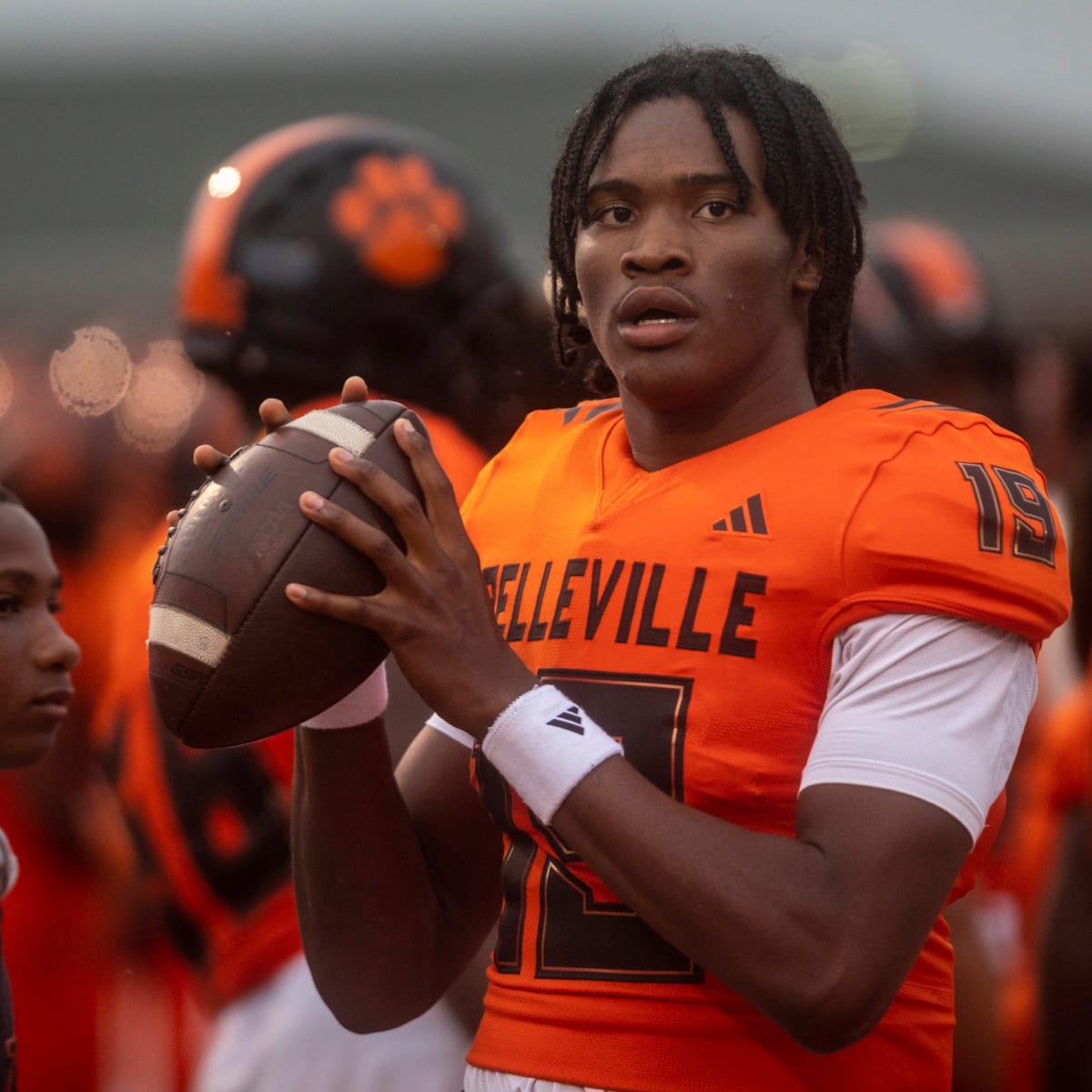
Tavien St. Clair
Bellefontaine, OH (Bellefontaine)
Ranking- #1 OH, #2 QB, #2 National
Committed to: Ohio State
Chip Kelly, known for his time at Oregon and later in the NFL, is recognized for his innovative offensive schemes. Kelly is the newest addition to the Buckeye staff. Here are the key elements of Chip Kelly’s offensive scheme that we can expect to see moving forward:
Spread Formation: Kelly’s offense often uses spread formations to space out the defense. This typically includes multiple wide receivers and spreading the field horizontally to create running and passing lanes.
Up-Tempo Pace: One of Kelly’s trademarks is the up-tempo, no-huddle offense. This approach aims to wear down the defense by keeping them on the field and reducing their time to make substitutions and adjustments.
Zone Read and RPOs (Run-Pass Options): Kelly’s offenses heavily utilize the zone read, where the quarterback reads a specific defensive player and decides whether to hand off the ball to the running back or keep it and run himself. This often evolves into RPOs, where the quarterback also has the option to pass based on the defensive alignment and reaction.
Simplified Playbook with Multiple Looks: Kelly’s offense is known for having a relatively simple playbook that can be run out of various formations and personnel groupings, making it difficult for defenses to predict what’s coming while being easy for players to execute quickly.
Physical Offensive Line Play: Despite the spread elements, Kelly emphasizes a physical, aggressive approach from the offensive line, often using a lot of inside and outside zone blocking schemes.
Quick Decision Making: The quarterback is required to make quick reads and decisions. This includes a mix of short, quick passes to move the chains and deeper throws to stretch the defense vertically.
Versatile Skill Players: Kelly’s scheme values versatile players who can line up in multiple positions and be effective in various roles, including running backs who can catch out of the backfield and wide receivers who can block effectively.
These elements make Kelly’s offense fast-paced, versatile, and difficult to defend, with a focus on exploiting mismatches and maintaining a high level of execution and conditioning. St. Clair is talented, has good arm talent, and dual-threat capabilities that would complement the offense. The thing I’d need to see him improve on is his footwork. However, he throws a good deep ball. He can be effective in the short to intermediate passing game as well.
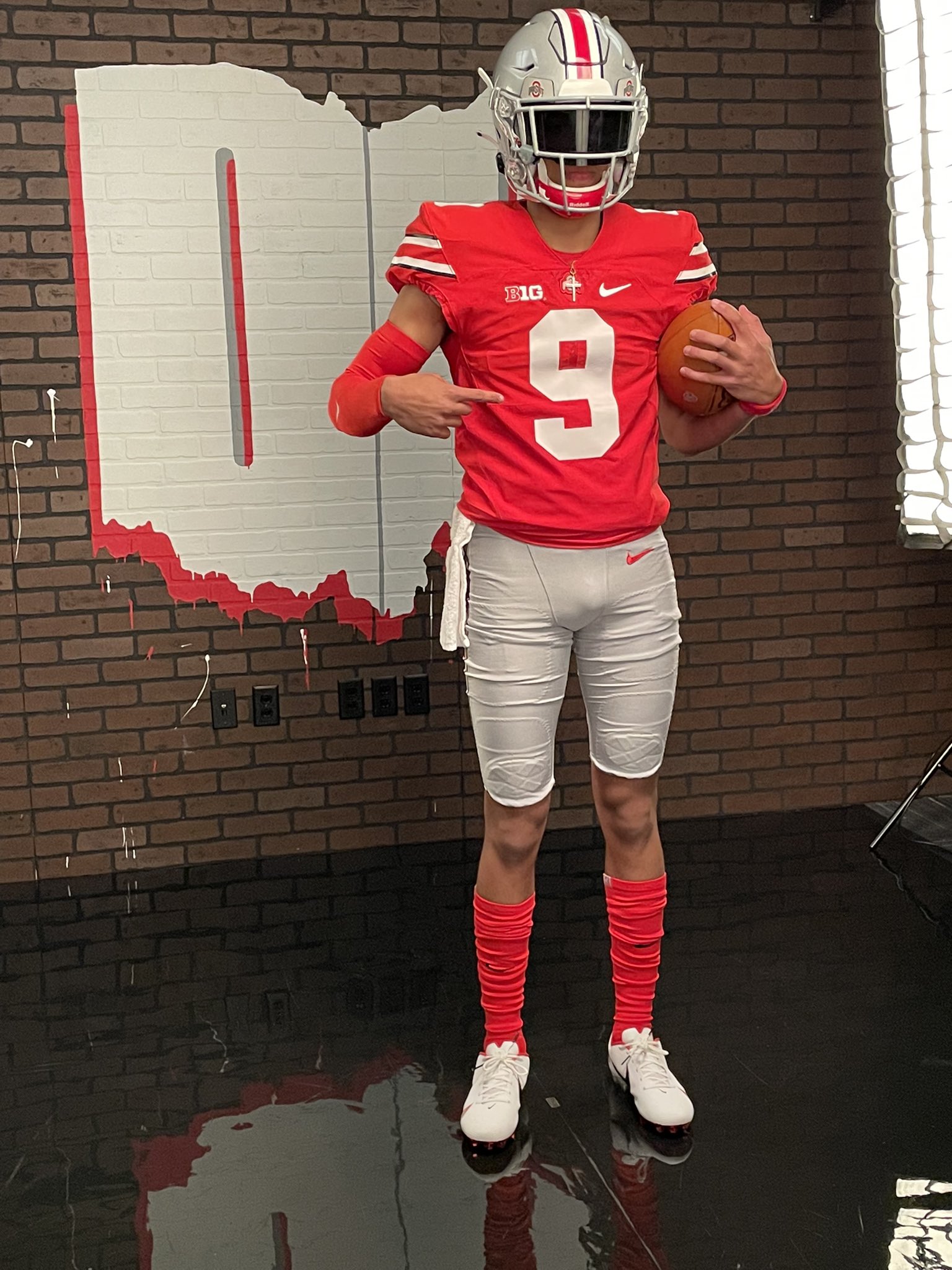
Julian Lewis
Carrollton, GA (Carrollton)
Ranking – #5 GA, #3 QB, #16 National
Committed to: USC
USC’s offensive scheme under head coach Lincoln Riley is known for its dynamic and high-powered approach, blending various elements to create a versatile and potent attack. Here are the key components of USC’s offensive scheme:
Spread Offense: USC primarily operates out of a spread formation, which spaces out the defense and creates opportunities for big plays.
Air Raid Influence: The offense incorporates principles of the Air Raid, emphasizing quick, high-percentage passing plays to distribute the ball to multiple receivers.
RPOs (Run-Pass Options): Riley’s system heavily utilizes RPOs, allowing the quarterback to read the defense and choose between running the ball or passing based on defensive alignment and movement.
Vertical Passing Game: There is a strong emphasis on vertical passing, aiming to stretch the field and exploit mismatches downfield.
Balanced Attack: While the passing game is a focal point, USC maintains a balanced attack by integrating a strong running game, often using zone blocking schemes to open up lanes for the running backs.
Tempo and No-Huddle: USC often employs an up-tempo, no-huddle approach to keep defenses off balance and control the pace of the game.
Quarterback-Centric: The scheme is highly quarterback-centric, relying on a skilled and intelligent quarterback to make quick decisions, read defenses, and execute both passing and running plays effectively.
Playmaker Utilization: The offense is designed to get the ball into the hands of playmakers in space, utilizing a variety of formations and motions to create favorable matchups and opportunities for explosive plays.
Adaptability: Riley’s offense is known for its adaptability, capable of adjusting to the strengths of the roster and exploiting the weaknesses of opposing defenses.
Overall, USC’s offensive scheme is a sophisticated blend of spread principles, quick passing, and a balanced run game, all executed at a fast tempo to maximize scoring opportunities and keep defenses on their heels. Julian may not be the biggest quarterback, nor have the strongest arm talent but the young man is a gamer. His ability to throw on the run and attack the middle third of the field is notable. Julian also moves the pocket very well. His ability to create will fit right in with the offense.

Husan Longstreet
Corona, CA (Centennial)
Ranking- #1 CA, #4 QB, #28 National
Committed to: Texas A&M
Collin Klein was hired as offensive coordinator. Here are key components (from his days at Kansas State) and what we can expect moving forward with the Aggies.
Run-Heavy Approach: Kansas State’s offense under Klein often emphasized a strong running game. This included traditional power runs, zone reads, and designed quarterback runs, leveraging Klein’s experience as a former dual-threat quarterback.
Quarterback Run Game: Klein incorporates the quarterback into the running game, using designed runs and read options to exploit defenses. This adds an extra dimension to the offense and forces defenses to account for the quarterback as a running threat.
Multiple Formations: The offense utilizes a variety of formations, including traditional sets with tight ends and fullbacks, as well as spread formations to create mismatches and keep defenses guessing.
Play-Action Passing: Play-action passing is a significant component of the scheme, using the strong running game to set up deep shots and intermediate throws, thereby keeping the defense honest.
Balanced Attack: While run-heavy, Klein aims for a balanced attack, ensuring the passing game is effective and capable of exploiting defensive weaknesses. The passing game includes quick throws, intermediate routes, and deep balls.
Physical Play: The offense emphasizes physicality, particularly in the running game. Offensive linemen, tight ends, and fullbacks are all crucial in creating running lanes and setting the tone at the line of scrimmage.
Adaptability: Klein’s offense is adaptable to the strengths of his personnel. He tailors the scheme to fit the abilities of his players, particularly the quarterback, ensuring the offense operates at maximum efficiency.
Tempo Control: Klein’s offense can vary its tempo, sometimes using a slower, ball-control approach to wear down defenses and control the clock, while also having the capability to speed up the pace when needed.
Emphasis on Execution: Klein focuses on precise execution and minimizing mistakes. This includes strong fundamentals in blocking, route running, and ball security to ensure consistent offensive production.
Creative Play Calling: The offense includes creative play designs and misdirection to keep defenses off balance. This can involve trick plays, unique formations, and unconventional play calls at crucial moments.
Collin Klein’s offensive scheme, while at Kansas State was characterized by a strong, physical running game, effective use of the quarterback as a runner, balanced play calling, and adaptability to the strengths of the team’s personnel. This approach aims to create a dynamic and unpredictable offense capable of consistently putting pressure on opposing defenses. Husan is a perfect fit for this Aggie offense. He’s a physical, gifted runner, and a solid thrower of the deep ball. Big things are in his future.
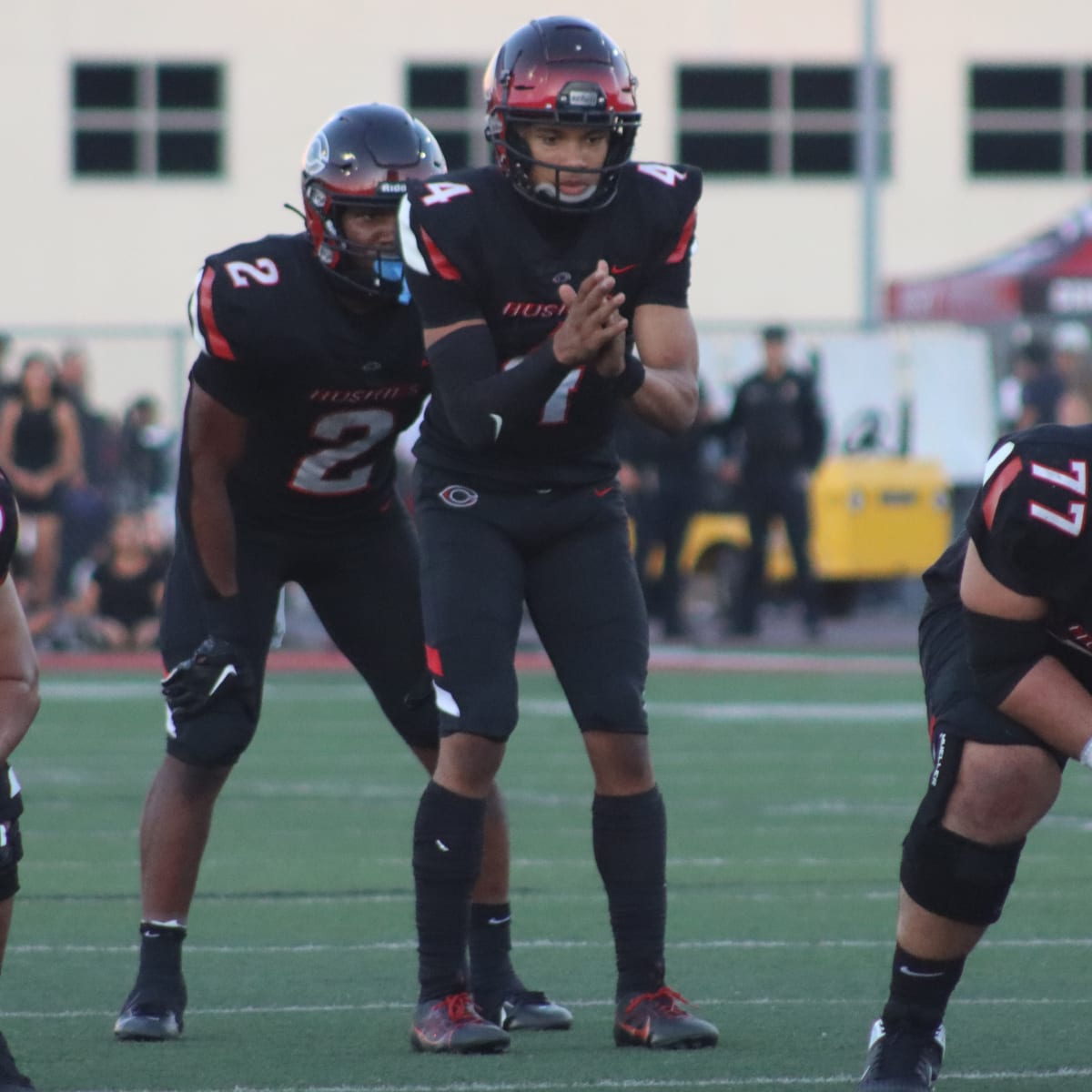
George MacIntyre
Brentwood, TN (Brentwood)
Ranking- #1 TN, #5 QB, #30 National
Committed to: Tennessee
Josh Heupel is known for implementing a high-tempo, spread offense that emphasizes pace, space, and explosive plays. Here are the key components of his offensive scheme:
Up-Tempo and No-Huddle: Heupel’s offense operates at a fast pace, using a no-huddle approach to keep defenses on their heels and prevent substitutions. This tempo aims to fatigue defenses and create mismatches.
Spread Formation: Heupel’s offense primarily uses spread formations to spread the defense horizontally and vertically, creating space for playmakers to make plays in open areas.
Quarterback-Centric: The offense revolves around a talented quarterback who can make quick decisions, distribute the ball efficiently, and stretch the field with both arm strength and mobility.
Run-Pass Option (RPO): RPOs are a significant part of Heupel’s offensive strategy, allowing the quarterback to read the defense and decide whether to hand off, run, or pass based on the defensive reaction.
Vertical Passing Game: Heupel’s offense is known for its aggressive vertical passing game, aiming to stretch the field and create big-play opportunities downfield. This is complemented by quick, short passes to keep the defense off balance.
Balanced Attack: While emphasizing the passing game and tempo, Heupel also incorporates a balanced running attack. This includes zone reads, designed quarterback runs, and traditional running plays to maintain offensive balance.
Quick Decision-Making: The offense emphasizes quick decision-making from the quarterback and playmakers to exploit defensive weaknesses and capitalize on mismatches.
Playmaker Utilization: Heupel’s scheme is designed to get the ball into the hands of playmakers in space, using various formations, motions, and alignments to create favorable matchups.
Adaptability: Heupel’s offense is adaptable, adjusting to opponent strengths and weaknesses while leveraging the talents of the team’s personnel to maximize offensive efficiency.
Scoring Efficiency: The ultimate goal of Heupel’s offensive scheme is to score points quickly and efficiently, putting constant pressure on opposing defenses and controlling the tempo of the game.
Josh Heupel’s offensive philosophy is rooted in high-tempo, spread principles aimed at maximizing offensive production through pace, space, and explosive plays. As coaching strategies evolve, it’s essential to stay updated with any recent developments or adjustments to his approach. I like this fit, Macintyre is decisive, tall in the pocket, and athletic. He can be the orchestrator of the offense.

In conclusion, this analysis offers a detailed evaluation of each offense and how the quarterbacks are expected to fit in. By examining the nuances of each team’s strategy and player capabilities, we gain a clearer understanding of their potential impact, moving beyond mere speculation to informed insights.

